Maybe you’ve heard Grenada is known for being “The Spice Isle,” but you don’t know why. Is it because their food is hot and spicy? Is it because they love to cook with a lot of spices? The answer is “none of the above”. Let me share with you why Grenada is known for being The Spice Isle.
Grenada is known for being “The Spice Isle” because, historically, it has been a large producer and exporter of spices, including nutmeg, mace, cloves, and cinnamon. Other spices the country is known for producing include allspice, bay leaves, pepper, ginger, and vanilla.
One might wonder how a tiny island in the Southern Caribbean became a key producer of nutmeg. I wondered, too, and decided to find out why.

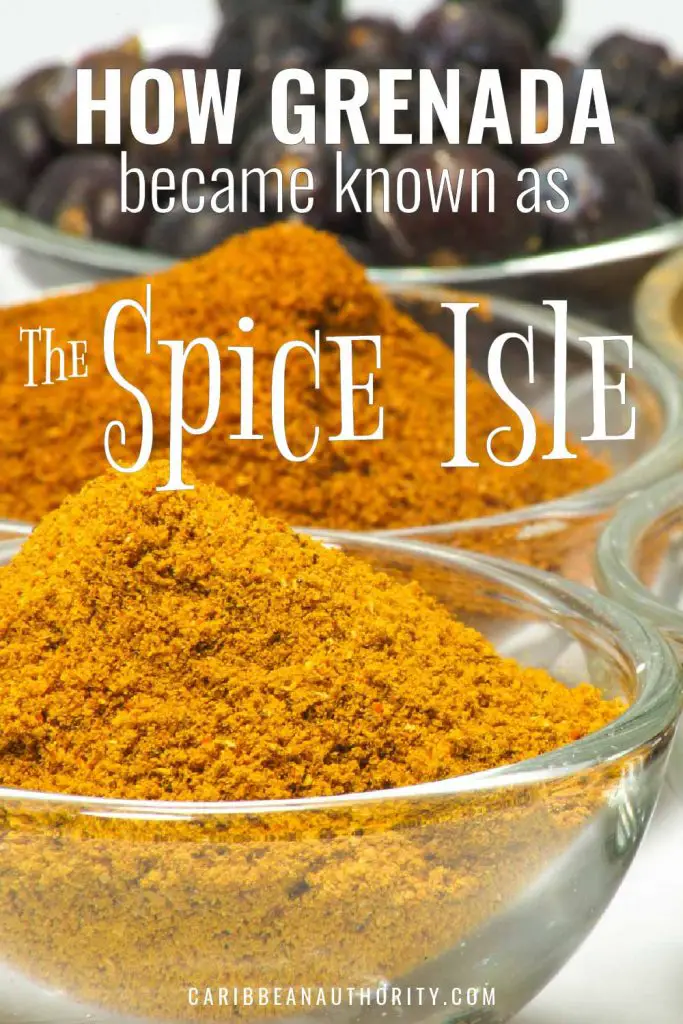
The History of Spices on Grenada
Sugarcane was an important crop for Grenada in the 18th century, but when it lost its economic value, other crops began to be produced on the island.
In 1714, cocoa, coffee, and cotton were brought to the island, and in 1782, King George III’s botanical advisor, Sir Joseph Banks, introduced nutmeg to Grenada. There were two key reasons for this:
- Grenada’s soil was ideal for growing nutmeg;
- Grenada was closer to Europe than the Dutch East Indies
Soon, Grenada became an important source of spice for European traders.
In the late 19th century, other spices, including cloves and cinnamon, began to be grown in Grenada, along with other key crops such as coconuts, avocados, breadfruits, papayas, mangoes, and starfruits.
How is Nutmeg grown and harvested?
The nutmeg tree (Myristica fragrans) is a tropical evergreen that can grow up to 60’ in height. It takes up to 8 years for the nutmeg tree to fully mature, at which point fruit product increases year after year.
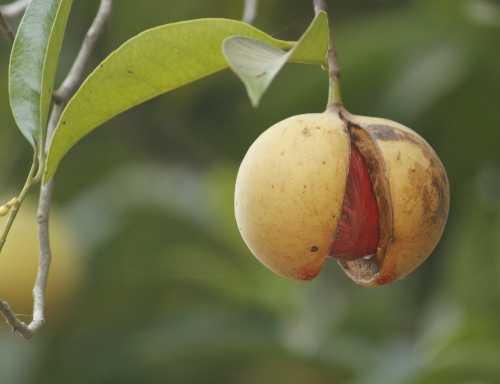
The fruit of the nutmeg is round and yellow, and although it can be harvested year-round, it’s key harvest times are from February to April and August to October.
When the fruit is fully ripened, it splits open and falls to the ground. Inside, the split fruit reveals the dark brown shell containing what we know as the nutmeg. The nut is sold whole or ground. As a whole nut, people grate it to use in cooking and baking. When ground, it can more conveniently be used without having to grate it.
The outer fruit portion is fleshy like a nectarine and is used to manufacture other products such as jams, jellies, and syrups. In fact, Grenada is home to De La Grenade Industries, Ltd., a leading food processing company that has “pioneered the use of nutmeg pericarp (fruit) in the manufacture of high value-added delicious products”.
The company distributes its jam, jellies, and syrups locally, regionally, and internationally. Perhaps the most popular and famous of their products is “Morne Délice Nutmeg Syrup,” created from the nutmeg fruit. The use of the syrup is quite versatile, as it’s recommended over ice cream, pancakes, fruit salad, and barbecue chicken.
What exactly is this spice called Mace?
I don’t know about you, but when I first learned Grenada is a major producer of Mace, I was like, “Who, what?”. I thought mace was something you sprayed in an attacker’s face so you could get away.
While that may be true, the mace we’re talking about actually comes from the same fruit that nutmeg comes from – just a different part of it.
As mentioned earlier, when the fruit from the nutmeg tree matures and splits open, it reveals a brown shell that contains nut-nutmeg.
The shell is covered by a red, lacy membrane, called ‘aril’ which is stripped away. This part becomes reddish-orange when dried and becomes the spice known as “mace”. Mace can be purchased whole but more commonly in ground format.
According to Kitchn, mace tastes “pungent & sweet” and is typically used in baked goods, meat, and stews.
The taste of mace has also been described as if you were to combine cinnamon and pepper.
Hmm, I guess if you’re interested in cooking with mace, you’ll have to do some experimenting.
Mace is a spice but is also used by the pharmaceutical industry. It’s thought to have chemicals that may affect the central nervous system and may also kill bacteria and fungi.
According to WebMD, although there’s insufficient evidence to say the mace is effective in treating these ailments, here are some possible uses:
- Gum disease (gingivitis). Early research suggests that chewing gum containing mace extract after every meal for 3 weeks reduces gum inflammation, bleeding, and plaque in people with gum disease.
- Cancer.
- Diarrhea.
- Increasing menstrual flow.
- Intestinal gas.
- Kidney disease.
- Pain.
- Producing hallucinations.
- Stomach problems.
- Vomiting.
Again, there is insufficient evidence to prove the effectiveness of Mac for the above ailments, so don’t run out and start using it without consulting your doctor.
Nutmeg is Grenada’s Largest Export
Today, nutmeg accounts for almost 30% of Grenada’s total exports, and is one of the world’s largest producers of nutmeg.
Prior to the devastation caused by hurricanes Ivan and Emily in 2004 & 2005, Grenada’s export of nutmeg was more than 30% of its total exports.
Unfortunately, Hurricane Ivan severely damaged many nutmeg trees that were more than 100 years old. It took many years for Grenada’s agriculture industry to recover from the devastation.
Spice production, especially Nutmeg, is still a major part of the nation’s exports, but not at the level it once was.
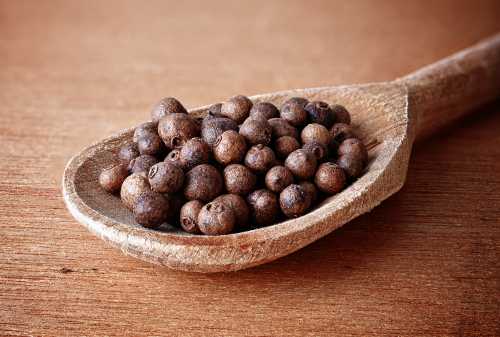
Grenada’s other spices
Nutmeg and mace are a big part of the island’s spice production, but they’re not the only spices Grenada is known for.
Other key spices include allspice, bay leaves, cinnamon, cloves, ginger, and turmeric (Grenadians refer to as saffron).
Allspice
Did you know allspice is actually the dried berry of the pimento tree? Neither did I.
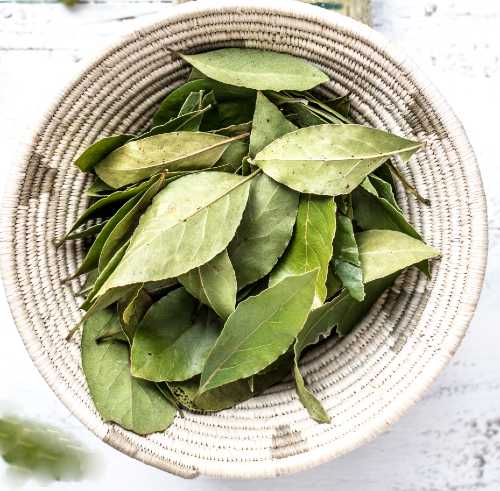
Bay Leaves
According to Spicetrekkers, the Bay Leaf from Grenada is unlike any you’ve tasted.
“The West-Indian bay leaves contain hints of allspice, menthol, and cinnamon, all of which combine to create a unique and exotic balance of flavor.”
Cinnamon
Grenadians refer to cinnamon as simply “spice” and differentiate the cinnamon grown and produced on the island from other countries.
The spice grown in Grenada is Ceylon Cinnamon, referred to as “True Cinnamon”, grown from the Ceylon Cinnamomum zeylancum tree, which originated from Sri Lanka.
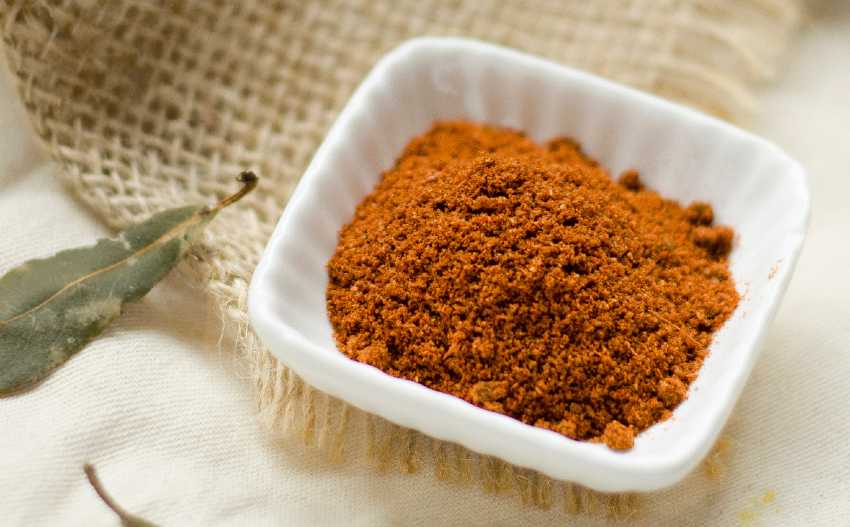
True Cinnamon is sweeter, milder, and, most importantly, has the least amount of substance called “Coumarin,” which is toxic in large amounts.
Grenada is quick to disassociate their cinnamon from the lower quality versions “Cassie” (Korintje Cassia cinnamon) and Saigon cinnamon, which are higher in Coumarin.
Learn About Grenada’s Spices First Hand
If you’re like me and are fascinated by the growing, producing, and usage of spices from Grenada, why not experience it firsthand? While visiting Grenada, you can tour an old spice plantation or processing facility to get a glimpse into the history and why Grenada is nicknamed The Spice Isle.
Here are a few suggestions:
- Savor the Spice
- Belmont Estate
- Laura Herb and Spice Garden
Bon Appetite!
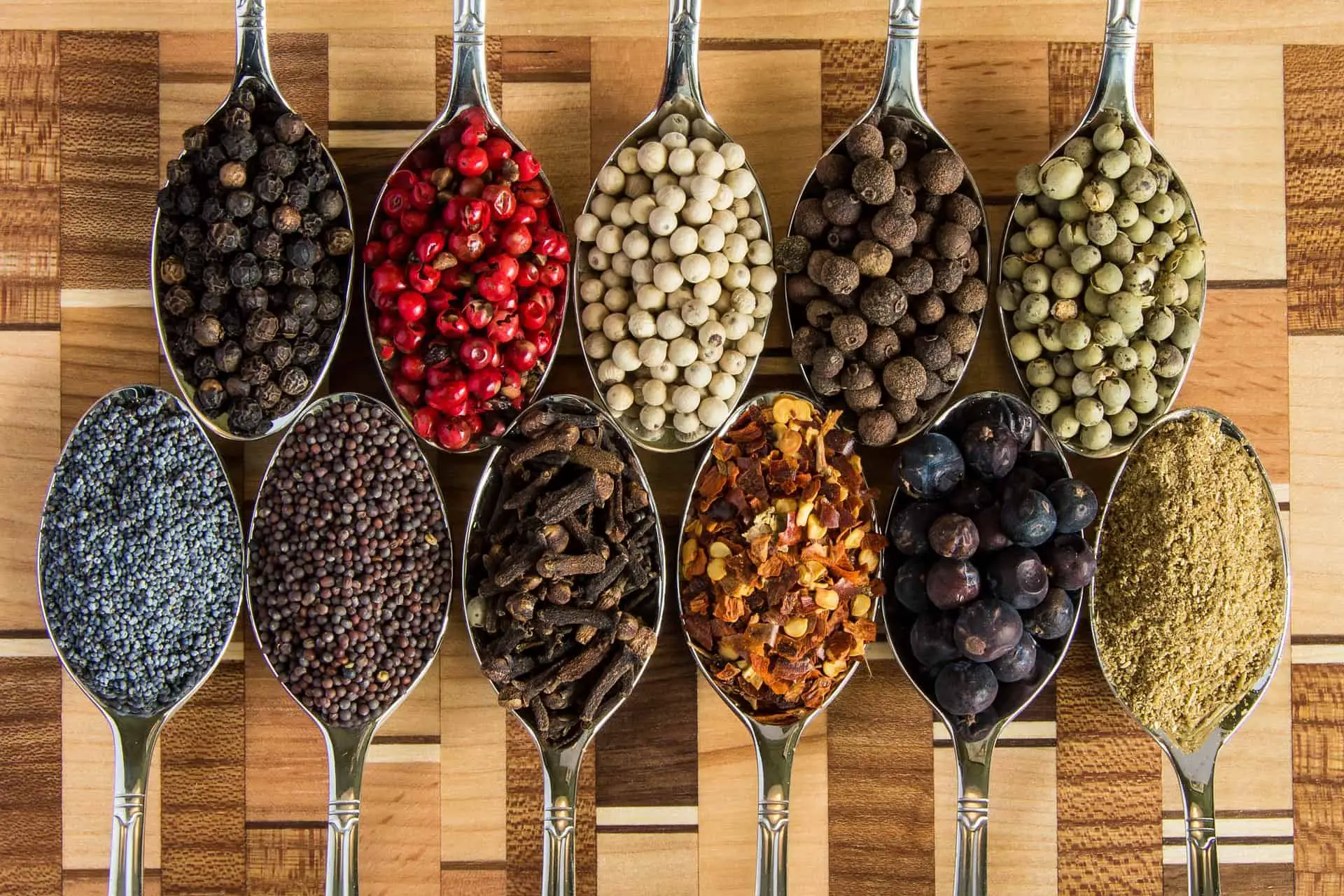

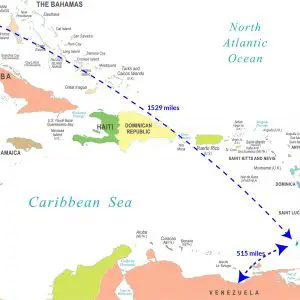






Loved learning about all these spices and how Grenada is known as the spice isle. Very educational. Beautiful island.
Thank you Allison!